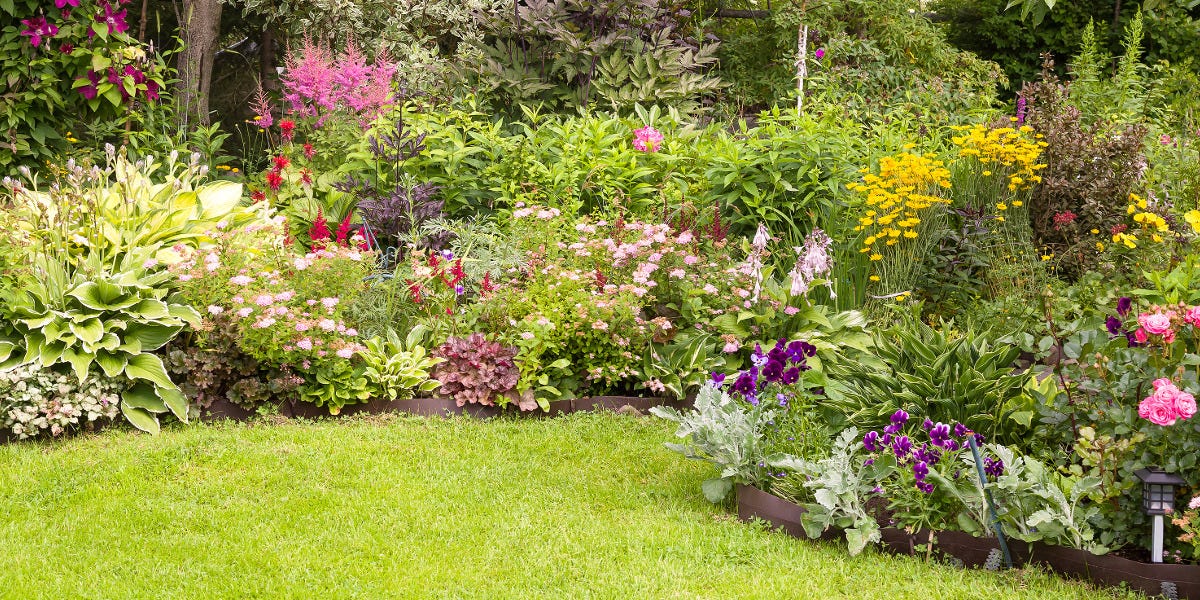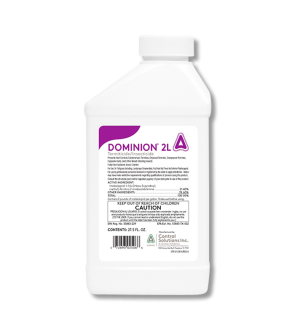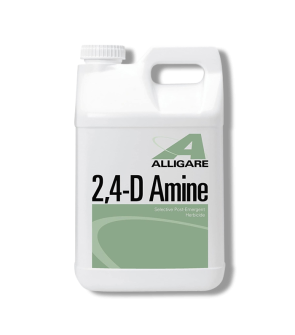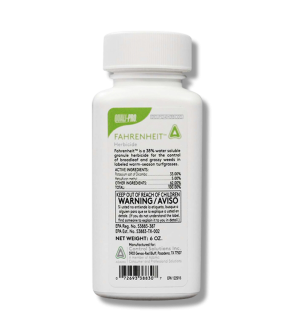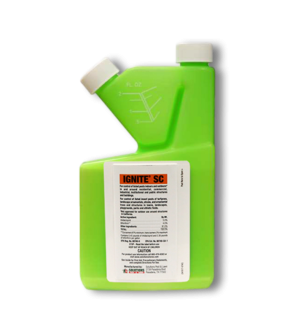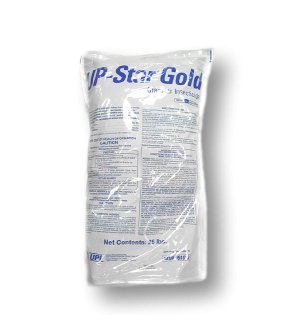Insects in Flower Beds/Ornamentals
Most Effective Products
Common Insects in Flower Beds and Ornamentals
While you work hard everyday to maintain your flower beds and ornamentals, there are just as many pests out there trying to work against it. Common pests in flower beds and ornamentals are aphids, caterpillars, grasshoppers, Japanese beetles, and thrips.
Each of these pests pose their own problems and homeowners often have difficulty controlling these infestations until the damages are quite extensive. It’s no secret that a damaged landscape can also introduce potential fungi or complete death of foliage.
To improve the appearance of your ornamentals and control each common flower bed pests then follow along closely with this DIY guide. If you are not seeing a pest listed here then contact our customer service team by phone, email, or come to one of our store locations for a professional consultation and tips.
Aphids
Aphids are destructive leaf-sucking pests that can quickly reproduce and cause cosmetic damages to complete foliage death. The honeydew they produce can also attract other insects like ants and promote the growth of sooty mold.
Identification

Aphids are small soft-bodied pear-shaped insects that measure 1/8th of an inch and range in color from green, yellow, black, gray, or red.
Inspection

Aphids will feed on new succulent growth on unopened flowers, soft stems, fruit, flower buds and the undersides of leaves.
Treatment
Step 1: Spray With Water

The safest and fastest way to deter aphids is to regularly water your flower beds and ornamentals with water.
Apply no more than an inch of irrigation once per week, preferably in the early morning so water can properly absorb.
Focus watering on the underside of plants since this is where most aphids congregate.
Step 2: Treat Ornamentals
 Use a residual spray to deter and eliminate aphids on ornamentals with an insecticide labeled to do so.
Use a residual spray to deter and eliminate aphids on ornamentals with an insecticide labeled to do so.
Dominion 2L Insecticide is a systemic insecticide and termiticide that will work to kill and repel various pests, including aphids. After application, it will leave behind a 3 month residual barrier
To use this product, you will need to use a hose-end sprayer for a wider and easier application.
Apply 1.5 fl. oz. of Dominion 2L Insecticide per 100 gallons of water for foliar applications on outdoor ornamentals.
Spray the top and bottom of listed ornamentals leaves until wet, but not to the point of runoff. Make sure to treat the underside of foliage since this is where aphids like to hide.
We recommend making applications before the pest population is high and reapplying as needed to to control aphids.
Caterpillars
Caterpillars can be serious pests to flower beds and ornamental plants with their vigorous feeding habits, and depending on the species have a webbing capability. The vast majority of caterpillars are the immature stages of moths and butterflies.
Regardless of the species, you will want to deter caterpillars from certain parts of your property like your ornamentals.
Identification

A number of caterpillar species could be visiting your ornamentals so we will focus on general characteristics that separate caterpillars from other larvae stages of pests.
All caterpillar species will have chewing mouthparts and will possess 6 or less legs along their abdominal segment.
Depending on the species, they vary from pink, brown, green, blue, or black in coloration and may have spots or stripes. Some caterpillar species may have hair or spines on their body or none at all.
Inspection
 The most common damage left behind from caterpillars are small holes in the leaves of the host ornamental plant. They may also feed on the tips of flowers and flower buds.
The most common damage left behind from caterpillars are small holes in the leaves of the host ornamental plant. They may also feed on the tips of flowers and flower buds.
Treatment
Step 1: Pruning

Keep up with regular pruning of dead or diseased plant parts. This not only improves the ornamental appearance, but helps to limit hiding and food sources for caterpillars.
The caterpillars of some species will create webbing so take care to prune foliage with these as well.
Pruned or fallen plant debris should be removed to control further sources of possible infestation.
Step 2: Apply Residual Insecticide
 There are a number of chemicals that are effective against caterpillars, but residual insecticides work best since they will continue to work when these pests are developing or hatching.
There are a number of chemicals that are effective against caterpillars, but residual insecticides work best since they will continue to work when these pests are developing or hatching.
Supreme IT is a broad-spectrum insecticide that eliminates over 70 types such as leaf-feeding caterpillars. Once dried, it will leave behind a 90 day residual barrier.
We recommend mixing and applying this product with a handheld pump sprayer for better control during application.
Determine how much Supreme IT to use by measuring the square footage of the treatment area. To do this, measure the length and width of the treatment area in feet then multiply them together (length X width = square footage).
Apply 0.125 to 0.25 fl. oz. of Supreme IT in 1 gallon of water per 1,000 sq. ft. of ornamentals.
Spray the top and bottom of leaves of ornamentals and the entire foliage until wet, but not to the point of runoff.
Reapply applications must not be done on ornamentals until 7 days have passed after application. Best to spray every 90 days to keep up with regular residual barrier protection of foliage.
Grasshoppers
Grasshoppers are typically ground-dwelling pests with powerful hind legs that enable them to jump high to escape threats. They are heavy feeders in all stages of their life cycle and prefer to eat grass, but are known to cause destruction to ornamentals.
Identification
Most grasshoppers are green, gray, to brown and depending on the species may have yellow, red, or black markings.
The average size of a grasshopper is 1 to 7 cm and have large eyes, antennae, stout body structure, chewing mouthparts, 2 sets of wings, and long back legs.
Inspection

Treatment
Step 1: Eliminate Weeds

For a general weed control on warm-seasoned lawns, we recommend using Fahrenheit Herbicide. To control weeds on cool-seasoned lawns, you may want to use 2,4-D Amine Selective Post-Emergent Herbicide.
Fahrenheit Herbicide is a post-emergent herbicide that controls over 100 broadleaf and grassy weeds in warm-seasoned lawns with its water solute granule formation.
2,4-D Amine Selective Post-Emergent Herbicide is a post-emergent herbicide that eliminates broadleaf weeds and brushes on cool-seasoned lawns with its emulsifiable concentrate formula.
With either product they will need to be applied with a handheld pump sprayer.
If you use 2,4-D Amine Selective Post-Emergent Herbicide as a spot treatment in ornamental turf areas, apply at a rate of ¼ pint of product in 3 gallons of water.
To use Fahrenheit Herbicide as a spot application in turf, apply 0.2 oz. of product per 1 gallon of water per 1,000 sq. ft.
Spray the top and bottom of weed leaves until thoroughly wet.
Do not allow people or pets to enter treated areas until 48 hours have passed after 2,4-D Amine Selective Post-Emergent Herbicide application and not for 24 hours with Fahrenheit Herbicide application.
Step 2: Use Chemical Pesticides

To use Supreme IT, you will want to use a pump sprayer for precise application during treatment.
Apply 0.25 to 0.5 fl. oz. of Supreme IT in 1 gallon of water per 1,000 sq. ft.
Spray the mixed Supreme IT solution to the top and bottom of ornamental plants leaves until wet, but not the point of runoff.
Next, you will want to broadcast Supreme IT across your lawn to completely kill and prevent grasshoppers. A hose-end sprayer would be best to treat your lawn since it will cover more in application.
Japanese Beetles
As adults and grubs, the Japanese beetle causes great destruction to ornamentals with their insatiable appetite. This pest can also give off a pheromone when feeding that results in a large feeding frenzy of Japanese beetles.
Identification
Japanese beetles are oval-shaped pests that measure between 1/3rd of an inch to 0.5 inches long. Their heads and thorax have a metallic green coloration while their wings are a metallic bronze or copper color.
Japanese beetle grubs are cream colored grubs that are c-shaped, measure between 1/8th of an inch up to 1 inch long, and have six legs.
At the top of their bodies are brown-head capsules and have a spiny or hairy appearance on the underside of the abdomen tip.
Inspection

The grubs will feed below the soil on the roots of turf and ornamentals. The adults will feed above ground.
Treatment
Step 1: Spray Affected Plants

We recommend using a hose-end sprayer to treat your entire lawn and ornamentals in one easy application.
First, treat your ornamentals. To get rid of Japanese Beetles from ornamentals, use 1.5 fl. oz. of Dominion 2L Insecticide per 100 gallons of water.
Spray the entire ornamental, including the underside of leaves to the point of wet, but not runoff. Lightly irrigate after application to push the product into the soil layer to eliminate Japanese beetles grubs.
Next, broadcast Dominion 2L Insecticide over your entire lawn to kill Japanese beetles and their grubs.
To get rid of Japanese beetles in lawns, apply 0.46 to 0.6 fl. oz. of Dominion 2L Insecticide in 2 gallons of water per 1,000 sq. ft.
Spray the top and bottom of turf leaves until wet, but not the point of runoff.
Japanese beetles feeding above and below ground will perish from the product’s active ingredient within several hours.
Thrips
Thrips are piercing, sucking insects that inflict a lot of damage to more than 1,000 species of plants. These pests feeding activities can cause discoloration, stippling, and scarring on ornamentals, resulting in cosmetic damages to full on death of foliage.
Identification

They have cigar-shaped bodies that measure 1/16th to 1/8th of an inch long. Their wings are narrow and fringed, enabling weak and short flights.
Inspection

Treatment
Step 1: Prune
If the ornamental has dead, discolored, or decaying parts it's time to prune.
While this may seem a lot, the foliage is working hard to supply nutrients to these areas. Less competition for nutrients results in better chances for foliage to survive and repair thrip damages.
Thrips could also be laying eggs in these areas so more the reason to prune.
Do not leave cut plant parts on the ground as thrips can continue to grow. Properly dispose of them so they cannot hatch or feed later.
Step 2: Spray with Water
With a garden hose, lightly spray the top and bottom of ornamental plant leaves, stems, and flowers.
This force of water will deter thrips that are traveling on ornamentals and provide energy for the foliage to grow.
We recommend using no more than 1 inch of irrigation once per week early in the morning. This will help to avoid over-watering and give just the right amount of water needed for plants.
Step 3: Spray Residual Insecticide

Since both juvenile and adult thrips feed on plant leaves a systemic insecticide like Dominion 2L Insecticide would be ideal. Keep in mind that this product will only suppress thrips and may not fully control them.
Apply 1.5 fl. Oz. of Dominion 2L per 100 gallons of water to suppress thrips in ornamentals. A hose-end sprayer will need to be used for application.
We also recommend using Supreme IT, which will repel and kill thrips feeding on the surface of ornamentals.
Use 0.25 to 0.5 fl. oz. of Supreme IT in 1 gallon of water per 1,000 sq. ft. of ornamentals in a handheld pump sprayer. For a hose-end sprayer application, use 10.8 to 21.7 fl. oz. of product per 100 gallons of water.
Spray the entire plant, including the underside of leaves until it is coated with solution, but not to the point of runoff.
Key Takeaways
What Are Common Bugs on Ornamentals
- The most common bugs to see on or around ornamental plants are aphids, thrips, grasshoppers, caterpillars, and Japanese beetles.
What Month Are Bugs Most Active on Ornamentals
- Spring and summer are the most common periods of pest activity since this is when most insects are breeding, laying eggs, or actively feeding.
What Can I Spray on Ornamentals to Keep Bugs Away
- Depending on the pest you are trying to control, using residual insecticides like Dominion 2L Insecticide or Supreme IT would work best to keep bugs off flowers and ornamental plants.
